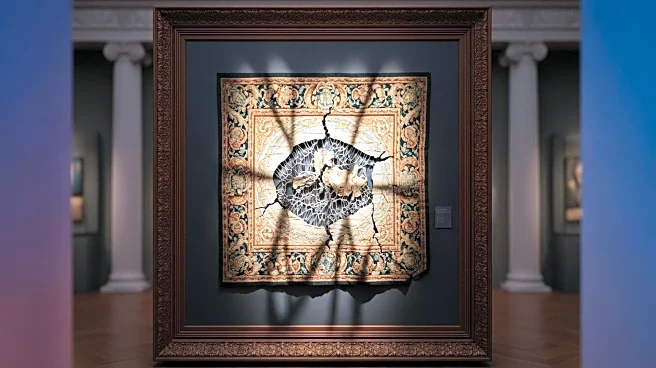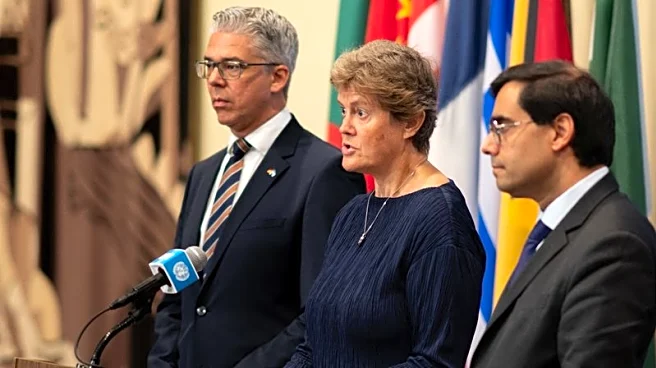What's Happening?
French experts have raised concerns over President Emmanuel Macron's decision to loan the Bayeux Tapestry to the British Museum, citing the artifact's extreme fragility. The nearly 1,000-year-old tapestry, which depicts the Battle of Hastings, is considered by many conservators to be untransportable due to its delicate condition. Despite these warnings, Macron announced that the tapestry would be displayed in the UK for nine months starting in September 2026. The decision has sparked a petition against the loan, gathering over 60,000 signatures. The tapestry has been housed in a museum in Bayeux since 1983, and plans were underway to store it during upcoming renovations, followed by a full restoration.
Why It's Important?
The decision to loan the Bayeux Tapestry has significant implications for cultural heritage preservation. Experts argue that moving the tapestry could cause irreparable damage, highlighting the tension between political gestures and conservation priorities. The tapestry is a unique historical document, and its potential damage could result in a loss of cultural heritage. The controversy underscores the importance of expert advice in decisions involving fragile artifacts. The loan is intended to symbolize cross-Channel reconciliation, but it risks overshadowing the tapestry's preservation needs.
What's Next?
The French government has yet to fully address the concerns raised by experts. If the loan proceeds, it will require the development of a new transportation system to minimize risks. The British Museum and French officials may face increased scrutiny and pressure from conservationists and the public. The ongoing debate may influence future decisions on the loan of cultural artifacts, potentially leading to stricter guidelines and protocols for handling fragile items.
Beyond the Headlines
The controversy surrounding the Bayeux Tapestry loan highlights broader issues in cultural diplomacy and the balance between political objectives and heritage conservation. It raises ethical questions about the responsibilities of governments in preserving historical artifacts. The situation may prompt discussions on international cooperation in cultural heritage preservation, potentially leading to new frameworks for artifact loans that prioritize conservation.












